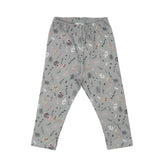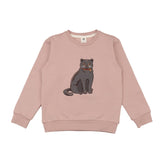WHY GENDER-NEUTRAL CHILDREN'S CLOTHING?
When you enter a children's clothing store, you're usually greeted by two distinct designs. Light pink, unicorn-patterned clothing is for girls, and dark blue, patterned clothing is for boys. Of course, you might not find exactly what we've described, but what you see probably isn't significantly different. This isn't just the case in clothing stores. You can also clearly see this gender divide in toy stores and children's book aisles. Gender stereotypes are roles assigned to men and women from an early age. These stereotypes limit children's true personalities by pigeonholing them into gender-specific taste and behavior patterns. We can imagine that we don't want to limit our children's personalities, right? It's perfectly natural that some girls like blue and cars, or that some boys love pink and unicorns... When we try to limit children to such stereotypes, we take away their freedom of self-expression. Since when have these stereotypes existed, or have they always existed?
HISTORY OF GENDER-SPECIFIC CHILDREN'S CLOTHING
Interestingly, there were no such stereotypes in children's clothing until the 1800s. Until then, babies, regardless of gender, generally wore white cotton clothes. These garments wore out more slowly, and their cut made diaper changes easier. In the 1850s, children's clothes began to be dyed in more pastel colors. At the beginning of the 20th century, colors in stores were now separated by gender. However, unlike today, until the 1940s, pink was considered a bolder color for men and blue a more elegant color for women.
After World War II, this view reversed, and the current perception of feminine pink and masculine blue emerged. With the rise of feminism in the 1960s, the strict gender segregation in fashion loosened somewhat. But in the 1980s, knowing the baby's sex before birth led to a re-popularization of the phenomenon of male and female colors. It is quite possible that gender-coded clothing was the result of a marketing strategy. For example, families with a boy and a girl began to buy separate clothes for each child because of the gender-specific colors, which increased store sales.
WHAT DOES GENDER-NEUTRAL CHILDREN'S CLOTHING MEAN?
Gender-neutral children's clothing is clothing designed for all children, regardless of gender stereotypes. Gender-neutral children's clothing rejects stereotypes like blue for boys and pink for girls. This allows children to break free from gender-specific societal expectations and cultural norms, allowing them to express themselves authentically.
At Walkiddy, we support the creativity and dreams of all children equally with our gender-neutral clothing and encourage them to be themselves. We want our clothing to liberate and empower them, not limit them. Therefore, when you look at our collections, you will see fun, colorful, nature-inspired clothing that is suitable for everyone. Furthermore, our cuts are designed so that all children can move freely and play comfortably. We don't have a category for boys or girls, because all patterns and colors are suitable for all children. Our priority is always to create designs that make all children feel comfortable, happy, and free. We believe that gender-neutral clothing will be the fashion of the future, and we try our best to support it.
WHY GENDER-NEUTRAL CLOTHING FOR CHILDREN?
1.It supports the development of children
Babies have unlimited potential; they're like a blank slate. However, when we assign gender colors and roles to our children from birth, we limit their potential. By choosing gender-neutral clothing, we can let children decide who they are and who they want to be, rather than making them believe their gender sets limits. Rejecting norms that say girls should be delicate and boys should be strong, and fashion trends that perpetuate these norms, is a very important step in supporting our children's personal development. This allows children to focus on exploring the world around them and expressing themselves without rules and boundaries.
2.It's better for the planet
Gender-neutral clothing means that these garments can be easily shared with anyone, regardless of whether they're a boy or a girl. Clothing without color, style, or pattern restrictions can be worn by children of different genders in the family until they're worn out. This means less consumption, less production, fewer discarded clothes, and a smaller ecological footprint.
3.It is budget-friendly
The fact that gender-neutral clothing is suitable for both boys and girls also saves your family's budget. So, if you have two children, a boy and a girl, you don't have to buy separate clothes for each. Your children can swap clothes, or one can wear an item that's too small for the other. This way, clothes are passed between siblings and your children's clothing budget is reduced.
4.It increases children’s freedom of movement
Gender-specific clothing not only limits children's color and pattern choices, but can also restrict their freedom of movement due to uncomfortable cuts. Gender-neutral clothing is designed to allow all children to play energetically and athletically. This clothing allows children to play and move in a way that is most comfortable.
5.It promotes creativity in the industry
Gender-neutral clothing has the potential to positively impact the future of many industries. The increasing demand for these garments encourages brands to create more creative designs that break free of gender stereotypes. Marketers must create advertisements that are more creative and original and support children's personal development. Furthermore, children raised free from stereotypes will have more freedom in their career choices in the future. This could, for example, pave the way for more women to turn to engineering, open up different perspectives in this field, and lead to new inventions.






